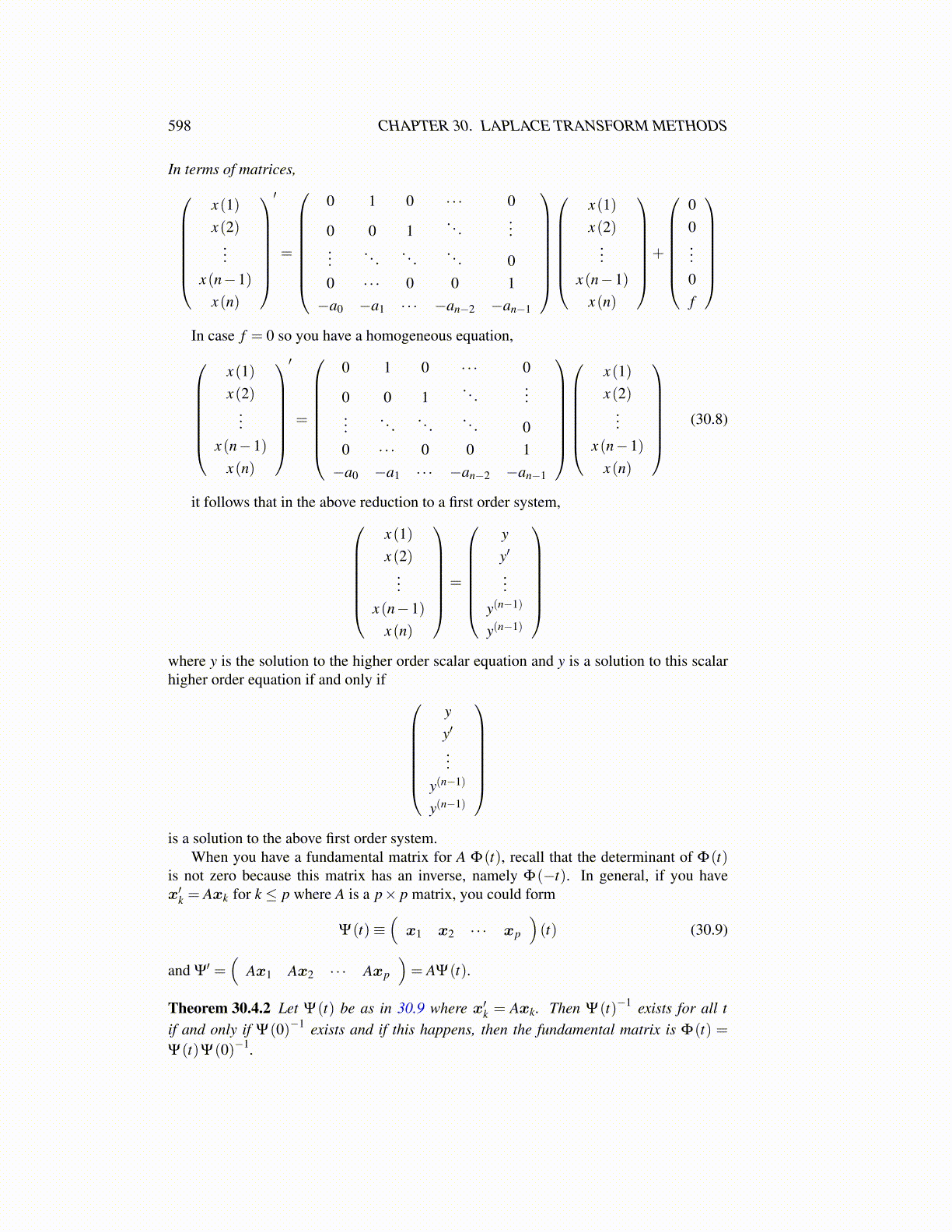
598 CHAPTER 30. LAPLACE TRANSFORM METHODS
In terms of matrices,
x(1)x(2)
...x(n−1)
x(n)
′
=
0 1 0 · · · 0
0 0 1. . .
......
. . .. . .
. . . 00 · · · 0 0 1−a0 −a1 · · · −an−2 −an−1
x(1)x(2)
...x(n−1)
x(n)
+
00...0f
In case f = 0 so you have a homogeneous equation,
x(1)x(2)
...x(n−1)
x(n)
′
=
0 1 0 · · · 0
0 0 1. . .
......
. . . . . . . . . 00 · · · 0 0 1−a0 −a1 · · · −an−2 −an−1
x(1)x(2)
...x(n−1)
x(n)
(30.8)
it follows that in the above reduction to a first order system,
x(1)x(2)
...x(n−1)
x(n)
=
yy′
...y(n−1)
y(n−1)
where y is the solution to the higher order scalar equation and y is a solution to this scalarhigher order equation if and only if
yy′
...y(n−1)
y(n−1)
is a solution to the above first order system.
When you have a fundamental matrix for A Φ(t), recall that the determinant of Φ(t)is not zero because this matrix has an inverse, namely Φ(−t). In general, if you havex′k = Axk for k ≤ p where A is a p× p matrix, you could form
Ψ(t)≡(
x1 x2 · · · xp
)(t) (30.9)
and Ψ′ =(
Ax1 Ax2 · · · Axp
)= AΨ(t).
Theorem 30.4.2 Let Ψ(t) be as in 30.9 where x′k = Axk. Then Ψ(t)−1 exists for all tif and only if Ψ(0)−1 exists and if this happens, then the fundamental matrix is Φ(t) =Ψ(t)Ψ(0)−1.